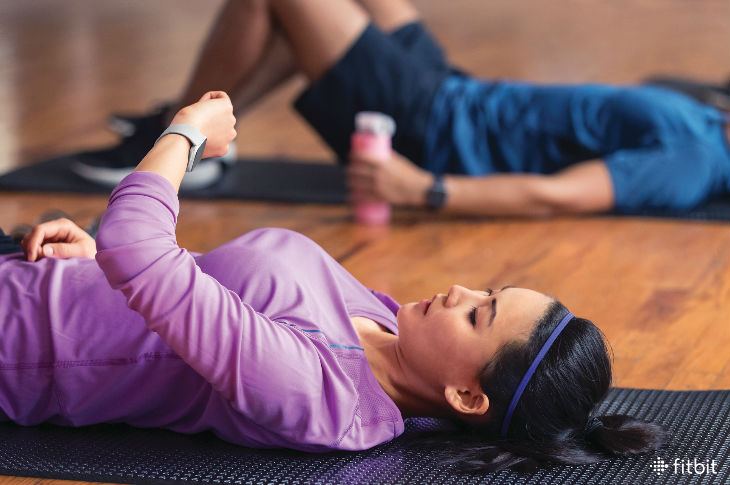
December is a month of extremes. Most areas of the country will see temperatures drop to the lowest point they’ve been in months, while demands on time reach peak levels—holiday parties, wrapping work projects, travel, shopping for gifts, and familial gatherings. You may find that low moods from lack of sunlight follow the high spirits of the holidays.
It’s time to focus on a few core areas of wellness this winter, like enjoyable exercise, enhancing mood, soothing your body, and finding balance in your schedule. Although we don’t always prioritize our own health, mental and physical, this season can tax the spirit. Without a little mindfulness, others’ needs and desires can easily jump ahead of our own. So, think ahead and commit to taking care of yourself as thoroughly as you do friends and family.
Need some help? Start here. Consider this your winter wellbeing checklist, tailored specifically toward the year’s coldest season.
Replace your vitamin D. With winter descending, it’s common to hide out from the cold temps, away from the fresh air and, critically, the sunshine. Since our primary source of vitamin D—important for bone health, disease protection, and stabilizing your mood—is from the sun, it’s common for those in cool weather climates to not get of this nutrient during the winter. You may notice the effects most prominently with a depressed mood, or “SAD” (seasonal affective disorder).
Have a plan for replacing your vitamin D. A simple blood test from your primary-care physician can measure your levels; he or she can also prescribe the best method for replacing the nutrient, if you are low. Supplements are available (both over-the-counter, and prescription). You can load up on vitamin D-rich foods like salmon, tuna, eggs, milk, orange juice, and fortified cereals. And lastly, don’t forget to get out in the sunshine as often as you can! A walk on a sunny sidewalk in the winter when it’s warm enough, even if short, can help boost your mood and overall health.
Find your balance. Make a list of winter activities you need to do or want to do—see family, travel for New Year’s, ice skating, hit that major work deadline, do a Christmas lights tour of your town, throw a Super Bowl party, stay inside by the fire for an entire afternoon. Categorize them into two columns: things that bring you peace and joy, and things that invoke stress.
Although you’d probably rather skip a handful of winter-related activities, balancing stressful obligations with activities you’re really excited about will help you maintain a sense of balance during a chaotic season where it’s easy to get lost in the hustle and bustle. Make sure you’re not doing more than one or two stressful items on your list before adding an enjoyable “reset” activity into the mix.
Don’t forget dietary balance, too. Emphasize winter vegetables, like kale, parsnips, sweet potato, and brussels sprouts, as mainstays of your diet—but research also shows us a glass of red wine is heart-healthy, while (a bit of) dark chocolate is rich in antioxidants that can help improve memory and protect against disease.
Kick skincare self-care into high gear. Research has shown that the weather blanketing much of the country during the winter can really cause skin problems to flare up. Cold temperatures shrink the cells, changing their surface (to the rough skin you know), while wet weather can strip away your skin barrier. In addition, changing environments—from the warm, heated indoors, into the biting cold—can affect your capillaries and your blood flow. If you have a skin condition like eczema or psoriasis, you may be even more prone to flare-ups in the winter.
Protect your skin this winter. If you’re dealing with excessive dryness or chafing, invest in a visit to your dermatologist for a potential prescription-level treatment. Otherwise, look for a rich lotion formulated with ceramides and hyaluronic acid, without any fragrance. Colloidal oatmeal can also help reduce itch while preventing loss of hydration. CeraVe Daily Moisturizing Lotion and Dove Eczema Relief are both great options.
Find an exercise regimen that works for you. If you are an outdoor runner, biker, or hiker, the winter weather will not always be conducive to engage in your favorite workouts. However, you can see the season as an opportunity instead of a setback. There’s never been a better time to try something new. If your regimen has been stale, spice it up; we know that choosing exercise routines we really enjoy will help us to stick to them long-term. Selecting something we feel positively about—a new skill we want to learn like skiing, or exercise we can do with friends or family—will also increase enjoyment and help us stick to our goals.
Join your friends together for a rec indoor volleyball league. Sign up for the gym or fitness studio you’ve had your eye on. Set up an indoor yoga area in front of your TV to do guided vinyasa or ashtanga sessions via YouTube, in the coldest of temps. At home systems like Peloton and do-it-yourself programs like BBG might also be good options for your winter fitness regimen. Just…move. Research suggests that even a meager 10 minutes a day of exercise can improve your mood.
Consider daily movement a necessary way to survive the winter. Track your weekly steps, and try to increase your goals as you move toward spring.
This information is for educational purposes only and is not intended as a substitute for medical diagnosis or treatment. You should not use this information to diagnose or treat a health problem or condition. Always check with your doctor before changing your diet, altering your sleep habits, taking supplements, or starting a new fitness routine.

If you have questions about a Fitbit tracker, product availability, or the status of your order, contact our Support Team or search the Fitbit Community for answers.
Please note: Comments are moderated and may not appear immediately after submission.